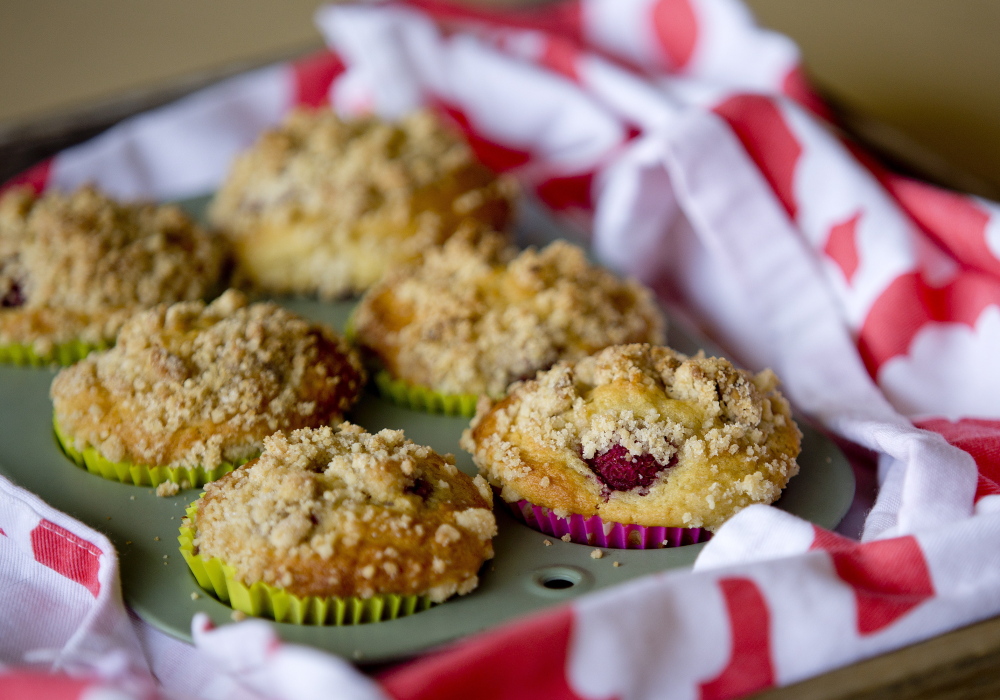A Google search for “blueberry muffin recipe” yields 1.62 billion results. As a recipe tester, it’s my professional guestimation that not all will yield a perfect muffin, no matter how good they look on Pinterest. Some will have too much fat and others not enough flavor. Still more will require too many bowls, and others will omit integral steps.
When I test a recipe, I find its holes using a rubric that ensures all ingredients are accounted for, all instructions flow smoothly and all results are repeatable.
I’ve recently added a dimension to my testing process to assess how well a recipe keeps waste – in terms of ingredient, resource and human time and effort requirements – to a minimum.
Here are my top five tweaks for making recipes lean (by streamlining processes and conserving natural resources), mean (in the British sense, which loosely translates to being frugal) and clean (in terms of keeping the washing up to a minimum).
The first step requires your eyes and a bit of mental math. In the muffin case, a basic batter recipe fills a 12-muffin tin, with each cup holding about 1/3 cup of batter, or 4 cups total. I never got my head around the physics of displacement versus absorption, so I can’t provide a mathematical justification as to why it takes 5 to 5 1/2 cups of ingredients to hit the right batter mark. But I am smart enough to know a recipe requiring more than a cup of blueberries to this proportional mix would be a waste.
As a budding cook, I used every ingredient in every recipe down to the letter. If it called for 2 tablespoons of cake flour ground from ancient wheat grown on a specific Italian plain, I went out and bought it, most times at great expense, and had no plans to use up the rest of the 1-pound bag.
The $20 I spent on “The Substitution Bible” by David Joachim 10 years ago saves me its cover price monthly by giving me options for using the ingredients I have in my cupboard in place of ones I don’t.
Understanding your appliances is key to making a recipe work. Pinpointing the hot spots in your oven and using a standalone thermometer to test its actual temperature vis a vis its temperature dial could mean the difference between edible muffins and garbage. Knowing the energy draw of your appliances will let you determine if it’s more efficient to melt butter for 30 seconds in the microwave in the batter bowl or use the stovetop for three times that span and generate the need to wash another pan.
Combine steps whenever possible to save both time and energy. For example, use one large measuring cup to both portion and combine wet ingredients (pour the largest volume in first, then lesser volumes thereafter) and beat the eggs into the mixture before adding them to the dry ingredients in the larger mixing bowl.
Lastly, it’s important to spread the word about your modifications to increase their sustainable impact. For an online recipe, provide a comment on how you’ve greened it up. In cookbooks, leave notes. Future readers will be happy to know how the recipe evolved over time, treasure your hand-written notes and be thankful you took steps to help develop a mainstream sustainable food system.
WASTE-FREE RASPBERRY CRUMB MUFFINS
As a relatively recent transplant to Maine, I don’t have the hubris to offer up a blueberry muffin recipe at the height of the season. But I adapted this one from Sarabeth Levine, owner of Sarabeth’s Bakery in New York, because she indicates that blueberries and raspberries can be used interchangeably.
By Sarabeth’s design, this recipe doesn’t require the energy-sucking step of creaming butter and sugar. To further reduce waste, I tested to make sure it worked with all-purpose flour should readers not have the cake flour the original recipe calls for; cut back on the fat and the sugar; increased the yield to shrink the gargantuan size of the muffins; and nipped and tucked the process to eliminate kitchen gadget overload and unnecessary dishes.
Makes 12 muffins
For streusel:
6 tablespoons all-purpose flour
2½ tablespoons butter, melted
1 tablespoon white sugar
1 tablespoon light brown sugar
¼ teaspoon vanilla extract
1/8 teaspoon cinnamon
For muffins:
1/2 cup neutral oil, such as grapeseed or canola
1/2 cup milk
1/3 cup orange juice
2 eggs, room temperature
1 teaspoon orange zest
2 cups all-purpose flour
1/2 cup packed light brown sugar
1 tablespoon baking powder
¼ teaspoon coarse salt
1 cup fresh or frozen raspberries
To make the streusel, combine all ingredients in a small bowl. Set aside.
To make the muffins, position a rack in the middle of the oven and preheat to 400 degrees F. Use spent butter wrappers to grease the insides of a 12-cup muffin tin.
Combine oil, milk, orange juice, eggs and zest in a large measuring cup. Whisk together flour, sugar, baking powder and salt in a medium bowl. Mix wet and dry ingredients until just combined. Fold in raspberries.
Divide batter among prepared cups. Divvy up the streusel among the 12 muffins. Bake for 10 minutes. Reduce heat to 375 degrees F. Bake until tops are golden and a tester inserted in the center of a muffin comes out clean, about 15 minutes, longer if you use frozen berries. Cool in the pan for 10 minutes.
Remove from the pan and cool completely.
Christine Burns Rudalevige is a food writer, recipe developer and tester, and cooking teacher in Brunswick. Contact her at cburns1227@gmail.com.
Send questions/comments to the editors.


